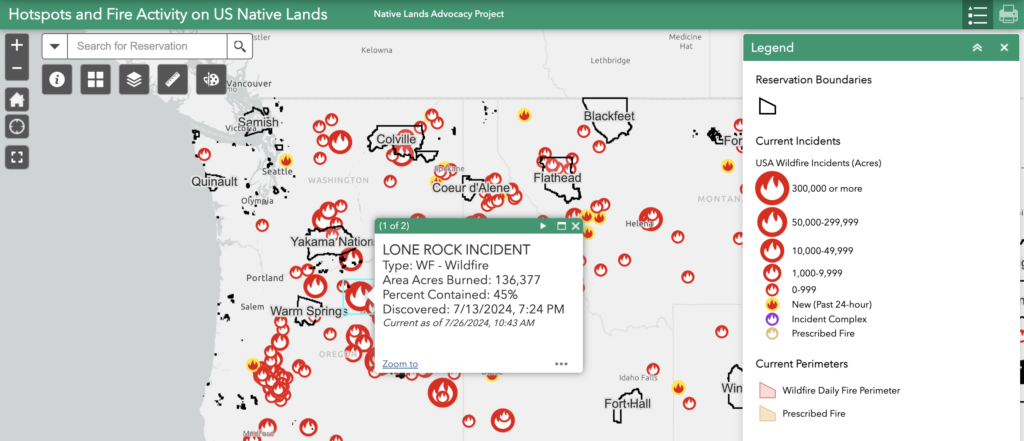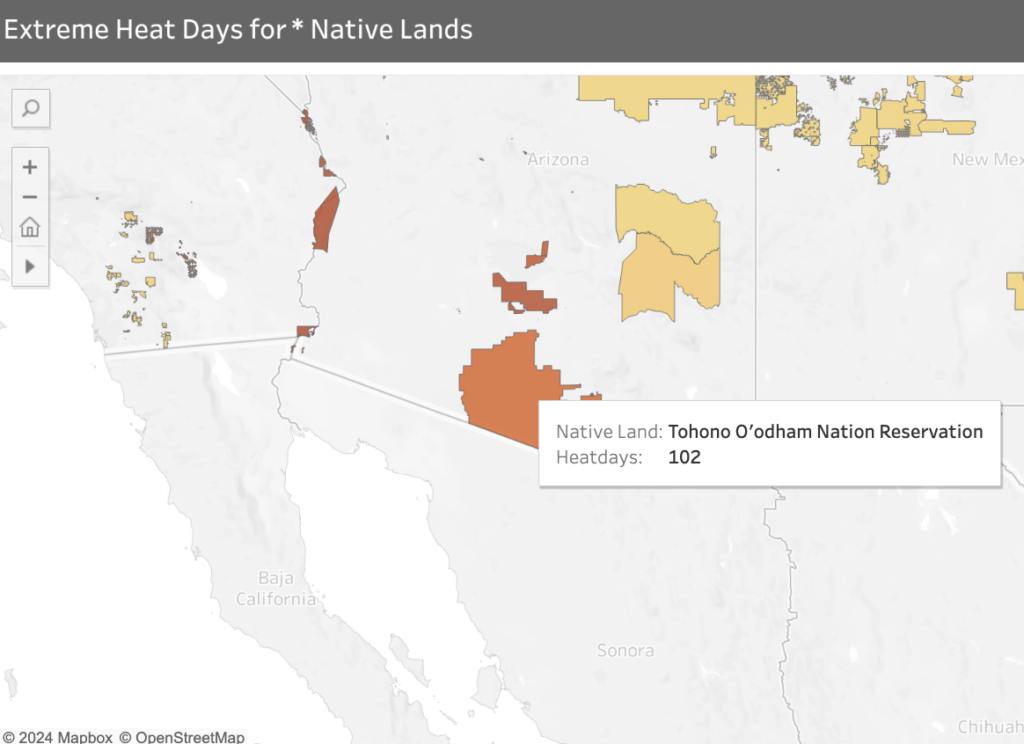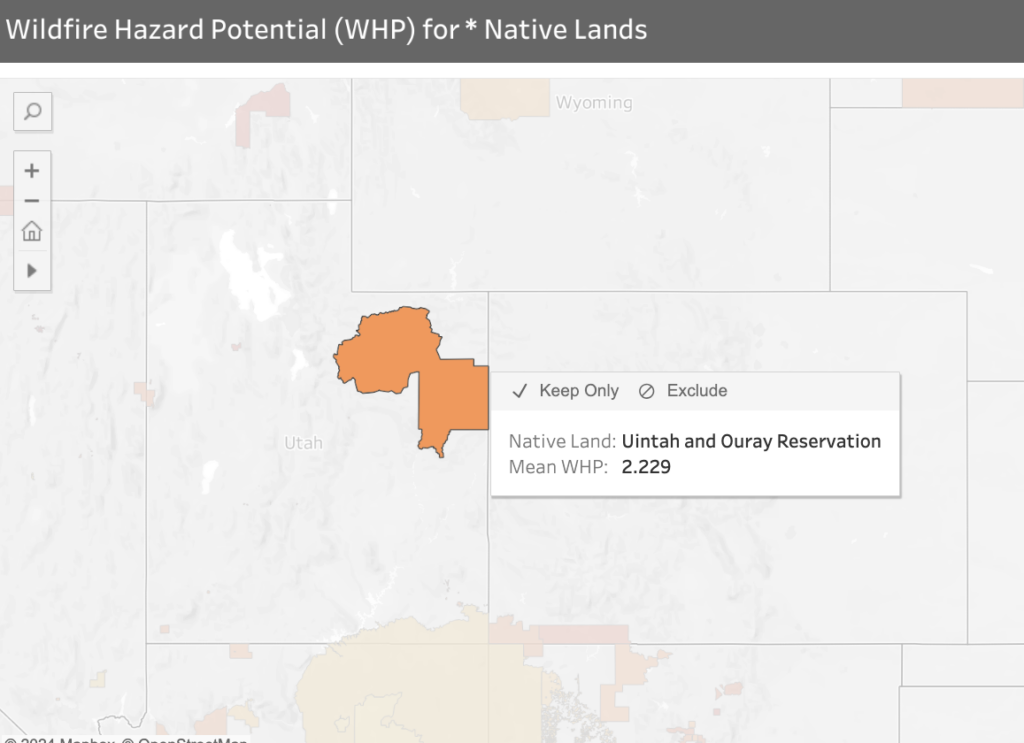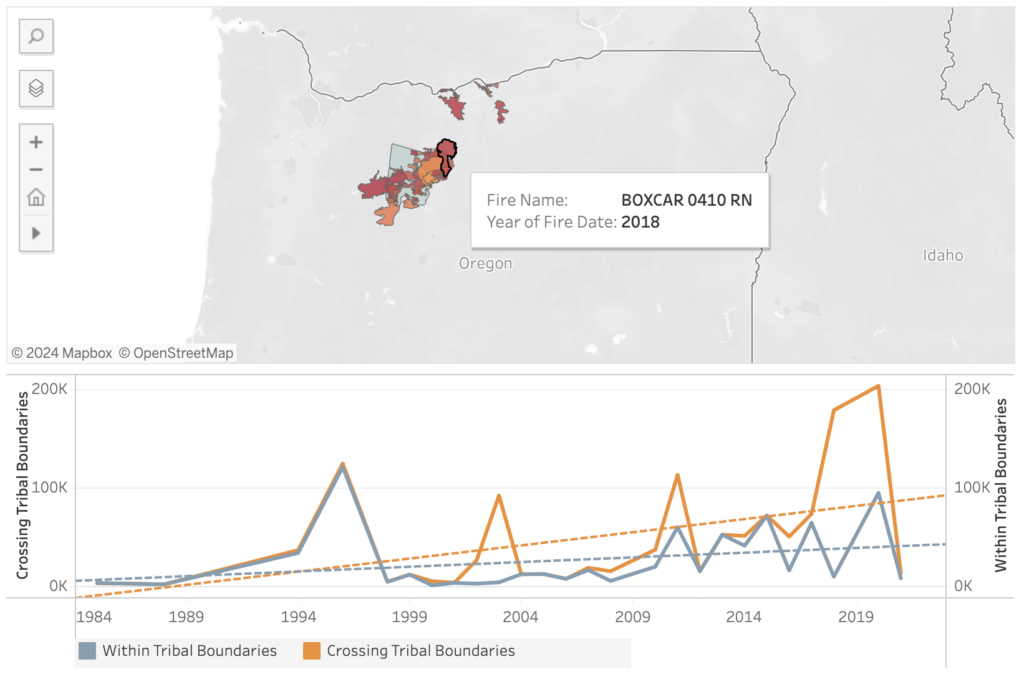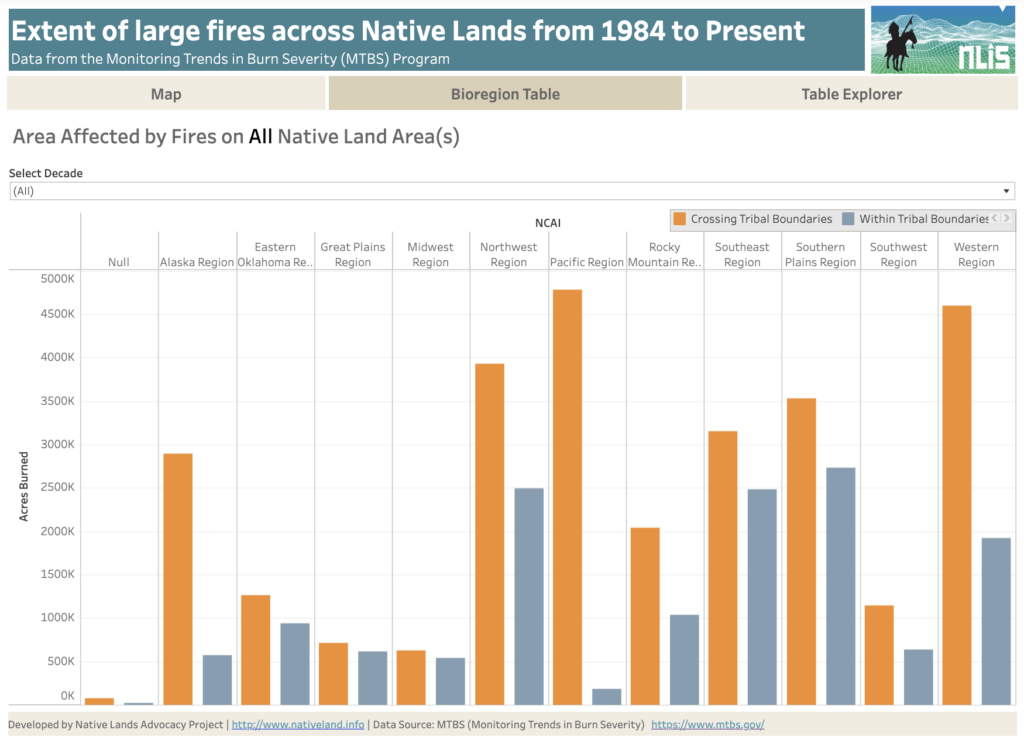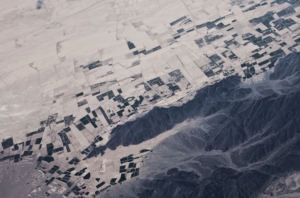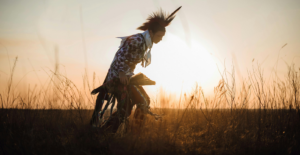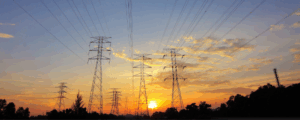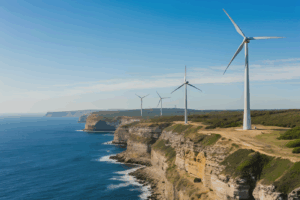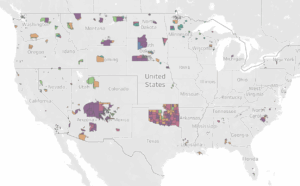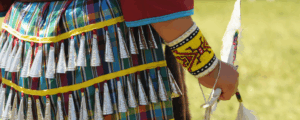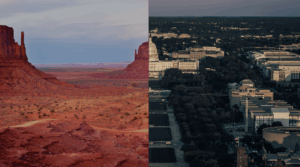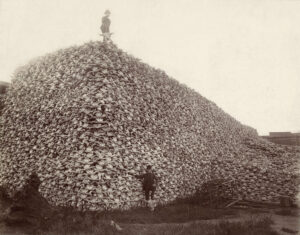The Native Lands Advocacy Project (NLAP) is excited to highlight three data tools related to fire on U.S. Native lands. These three tools (our Thermal Activity Map, Environmental Risks Dashboard, and Extent of Fires on US Native Lands Dashboard) can help users understand the factors contributing to wildfires and their impact on Native Nations. These tools are especially timely as record-breaking wildfires have swept across North America in recent years, and data indicates that forest fires have grown larger and more destructive across the world.
These three fire-related data tools have been developed for our soon-to-be-launched Climate Data Portal, which will include a broad array of dashboards, maps, and other free resources to support tribal climate adaptation. To receive a notification when the Climate Data Portal goes live, subscribe to our newsletter at the bottom of this page!
Thermal Activity Map
Our Thermal Activity Map is a live tool which provides updated information regarding fire activity on Native reservations in the U.S. The data comes from two different sources: the Visible Infrared Imaging Radiometer Suite (VIIRS) satellites and the Moderate Resolution Imaging Spectroradiometer (MODIS) satellites. VIIRS satellites provide data for a period of seven days, while MODIS satellites provide data for the previous 48 hours. The application of both datasets allows users to get a better understanding of fire activity taking place across the U.S., and NLAP’s addition of Native land boundaries to the map allows land stewards to see fires on their own lands.
Screenshot taken on July 26, 2024. Due to the live nature of this tool, this data updates regularly & will look different depending on the date accessed.
Environmental Risks Dashboard
Our Environmental Risks Dashboard displays data for four key environmental risks: the Palmer Drought Severity Index, Extreme Heat Days, Precipitation, and Wildfire Hazard Potential. This dashboard was developed in conversation with the authors of Effects of land dispossession and forced migration on Indigenous peoples in North America (Farrel et al., 2021). Learn more about each indicator here.
Fires are caused (and affected) by a complex web of interrelated climate factors. This dashboard allows users to view four key factors on their reservation lands. Two of the four risk indicators are shown below: on the left, the number of Extreme Heat Days experienced on the Tohono O’odham Nation Reservation in 2020; on the right, the Wildfire Hazard Potential for the Uintah and Ouray Reservation. Specifically, the Wildfire Hazard Potential indicator is a discrete scale from 1 (very low fire hazard potential) to 5 (very high hazard potential) designed to inform fuel planning efforts. We chose this measure because it synthesizes many ecological, geographic, and atmospheric factors into a single index.
Extent of Fires on Native Lands Dashboard
Our Extent of Fires on U.S. Native Lands Dashboard highlights the distribution and impact of wildfires on Native lands between 1984 and 2022. The dashboard features detailed maps and interactive elements, allowing users to explore fires that have occurred entirely within Native lands and fires that cross the boundaries of Native lands. This dashboard summarizes data from the Monitoring Trends in Burn Severity (MTBS) Dataset, which the USGS EROS and the United States Department of Agriculture Forest Service jointly implemented.
The data displayed on this dashboard allows tribes to see which areas have been affected by wildfires, and how fires intersect with tribal boundaries. This understanding is essential for developing effective fire management strategies, ensuring the safety and sustainability of Native communities, and mitigating future fire risks. Additionally, knowing the extent of fire-affected areas within each boundary provides a broad perspective on the land management challenges and needs of Native communities.
If you enjoyed learning about these data tools...
Keep an eye out for two exciting upcoming resources:
- Our storymap, Good Fire: Mitigating Wildfire Risk & Healing Native Lands, where we outline the history of fire suppression in the United States, explore data related to wildfires, and highlight vital, healing work being done to return good fire to Native lands.
- Our Climate Data Portal, which will include a broad array of dashboards, maps, and other free resources to support tribal climate adaptation.
Subscribe to our newsletter at the bottom of this page and follow us on social media to keep up with our work!
Written by Mauryn Morfitt & Emma Scheerer

